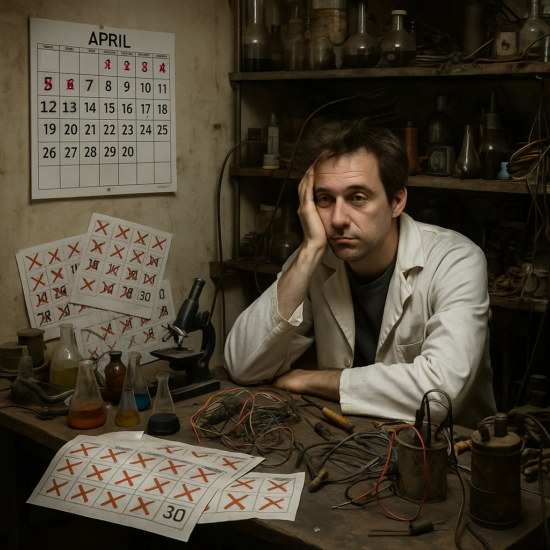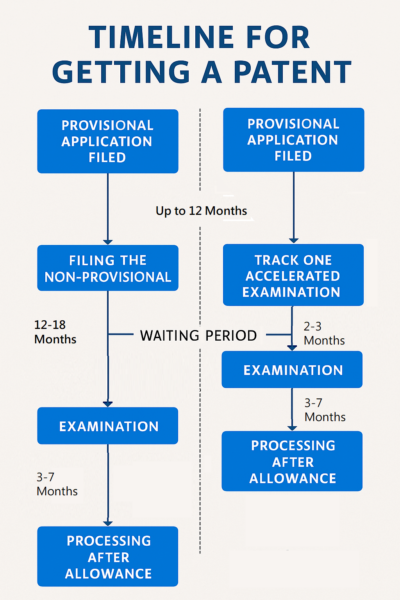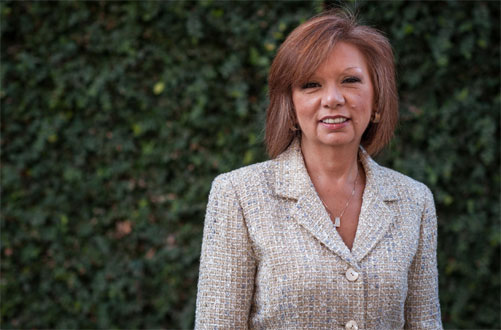
The patent application process is complicated, with many technical and procedural requirements that many businesses, entrepreneurs, and inventors are unaware of. The path from concept to patent grant takes considerable work, expertise, and time. Each stage of the process carries distinct legal and procedural requirements under U.S. patent law. This article details the steps involved in obtaining a utility patent through the United States Patent and Trademark Office (USPTO) and the typical timeline.
There are three main types of patents: utility patents, design patents, and plant patents. This article focuses on the utility patent application process. The patent application process in the United States is governed by federal statutes and regulations implemented by the USPTO. A patent grants the inventor exclusive rights to exclude others from making, using, selling, or importing the claimed invention for a limited term, typically 20 years from the original filing date of the utility patent application.
Typically, the patent application process takes anywhere from about one year from the time of the filing date to two or more years, depending on the complexity of the invention and the particular art unit that handles the application. Some art units are more impacted than others, leading to longer wait times. For example, art units that handle business methods, software-based inventions, and financial technologies (such as those within Technology Center 3600) often experience significantly longer average pendencies, ranging from three to five years or more before a final disposition. This is due to both high application volumes and more intensive scrutiny under 35 U.S.C. § 101, which deals with whether the application covers proper subject matter that is eligible for patent protection.
In contrast, applications assigned to less burdened art units, such as those handling mechanical inventions or certain chemical technologies (e.g., Technology Centers 1700 and 3700), often proceed more quickly, with some applications being examined and allowed within 12 to 18 months from the filing date.
Applicants can take specific actions to avoid unnecessary delays during the examination process, which are discussed below.
Before beginning the filing process, a thorough patent search is strongly recommended. This search helps determine whether the invention is novel and non obvious in light of prior art, which includes previously granted patents, published patent applications, and other publicly disclosed information.
A prior art search can identify references that may be cited during the examination process. The prior art search and analysis will indicate how smooth the examination process will be. If there is closely related prior art, then the examination process is going to be difficult and prolonged. Your patent attorney will likely need to submit multiple rounds of claim amendments and legal arguments to convince the patent examiner that your invention is patentable. The prior art search can also help the patent attorney craft the scope of the claimed invention to put the patent application in a better form for examination, allowing them to focus on the aspects of the invention that are distinct from the related search results.
There may be good reasons for filing a provisional patent application instead of a non provisional patent application. The decision affects the application process, patent rights, and timeline. A provisional patent application can be an attractive option for several practical reasons.
First, it can be a cost-effective way to secure an early filing date without the formalities and expense of a full utility non-provisional patent application, while still allowing the applicant to legally use the term "patent pending" in connection with the invention. This can be especially useful for startups, individual inventors, or early-stage companies that are seeking funding, evaluating market interest, or refining their invention before committing to the full costs of prosecution.
Second, a provisional application can serve as a strategic placeholder. It gives the applicant up to 12 months to further develop the invention, conduct market research, or seek partnerships while preserving the filing date as a priority date for any subsequent utility non-provisional application claiming benefit of the provisional.
Filing a provisional application does not initiate substantive examination by the USPTO and does not result in a patent grant unless a utility non-provisional patent application is filed within 12 months. This means that while the provisional filing preserves rights, it effectively delays the start of the examination process. As a result, the overall timeline to get a patent may be extended by up to one year. Nonetheless, this delay can be beneficial, as it provides time to improve the invention and prepare a stronger, more complete utility application.
In sum, the choice to file a provisional patent application can provide flexibility, cost savings, and strategic advantages, particularly when an invention is still being finalized or when immediate protection is needed while preparing for a full utility application.
A provisional application establishes a provisional filing date. It does not require claims, an oath or declaration, or formal drawings, but it must fully describe the invention to satisfy the written description requirement under 35 U.S.C. § 112. A provisional application gives the applicant 12 months to file a corresponding non-provisional application that claims the benefit of the provisional filing date.
The utility non-provisional patent application is the formal document examined by a patent examiner. It must include at least one claim, an abstract, a specification with sufficient detail, and drawings where applicable. This is the application that initiates the full examination process, leading either to a patent grant or final rejection.
Applications may be filed electronically through the USPTO’s Patent Center. To complete the filing process, applicants must submit several key documents, including a specification that describes the invention in detail, at least one claim that defines the scope of legal protection sought, and any necessary drawings that support the disclosure. An oath or declaration must also be included, affirming the inventorship and compliance with relevant legal standards. Additionally, applicants must pay several required fees, which include filing fees, a publication fee, and an issue fee.
Beyond these initial fees, applicants are also responsible for paying a search fee and examination fee as part of the review process. Once a patent is granted, ongoing responsibilities include the payment of maintenance fees at regular intervals to keep the patent in force. These fees are due at 3.5, 7.5, and 11.5 years after the date of patent grant and are critical to maintaining patent rights for the full term.
After submission, the utility patent application enters the examination process. A patent examiner at the patent office (USPTO) reviews the application for compliance with legal requirements such as novelty, non-obviousness, and adequate disclosure.
The examiner begins by performing a prior art search and comparing the claimed invention to existing references. This stage may take between 12 and 18 months after the filing of a nonprovisional application, depending on the assigned art unit and examiner workload. Following this search, most applications receive a first office action, which typically contains one or more grounds of rejection. This first office action is part of standard patent prosecution and does not terminate the application.
Applicants are given an extendable deadline of three months to respond to an office action in order to avoid incurring extension fees, though the deadline may be extended by up to three additional months with payment of appropriate fees. The typical back-and-forth with the examiner adds anywhere from 3 to 6 months to the overall timeline.
If the examiner maintains the rejections after a response, a second office action is often issued, and in many cases this will be a final rejection. Upon receiving a final rejection, applicants may file a Request for Continued Examination (RCE) to continue prosecution before the same examiner, which typically adds another 4 to 6 months to the pendency. Alternatively, applicants may choose to appeal the rejection to the Patent Trial and Appeal Board (PTAB), a process that may extend the application timeline by 1 to 2 years or more depending on the complexity of the issues on appeal.
Because of this iterative process, the total pendency of a utility application from filing to final disposition (either allowance or abandonment) can vary significantly, often ranging between 12 and 48 months. This timeframe depends not only on the responsiveness of the applicant but also on the nature of the invention and the efficiency of the assigned art unit.
Once the patent examiner reviews and allows the application, the applicant must pay the issue fee. After that, the patent grant is issued, conferring enforceable patent rights. Patent owners must continue to pay maintenance fees at 3.5, 7.5, and 11.5 years to keep the patent active.

Applicants can take specific actions to avoid unnecessary delays during the examination process.
Submitting a complete and compliant application with well-drafted claims, a thorough specification, and high-quality drawings can help prevent early rejections. Promptly responding to office actions, avoiding unnecessary claim amendments that introduce new issues, and engaging in proactive interviews with the examiner can also facilitate more efficient prosecution.
Additionally, programs such as the Track One prioritized examination can reduce pendency to under 12 months for an additional fee and may be a worthwhile option for applicants seeking an expedited patent grant. Track One is available for utility and plant patent applications and allows for final disposition within about 12 months from the grant of prioritized status. To qualify, the applicant must submit a complete application with no more than four independent claims and thirty total claims, and pay an additional prioritized examination fee and processing fee.
Other acceleration programs also exist. Applicants who are 65 years or older, or whose health or other circumstances justify expedited handling, may file a petition to make special based on age or health. Also, first-time filers that also qualify as micro-entities can accelerate their applications with the submission of a form. These petitions are typically granted without requiring additional fees.
Participation in these programs can be especially valuable when the applicant is seeking early market entry, investment, or licensing opportunities. However, they require careful preparation to ensure eligibility and maximize the likelihood of success.
Patent attorneys play a critical role in crafting strong claims, responding to office actions, and ensuring procedural compliance. A patent attorney can also advise you as to the accelerated prosecution options that may be available to you. Consulting a qualified patent attorney is especially important for complex technologies or strategic filings.
A frequently asked question is, how long does it take to get a patent? The answer depends on several factors, including the technology area, filing completeness, examiner workload, and responsiveness to USPTO communications. As described in earlier sections, the type of application filed also plays a role. Filing a provisional patent application delays substantive examination by up to 12 months, as no action is taken by the USPTO unless a nonprovisional is filed within that time.
Following submission of a utility nonprovisional patent application, examination typically begins between 12 and 24 months later, depending on the assigned art unit. The initial office action generally issues within that time frame, and each round of examination and response can add 6 to 12 months. In the case of a final rejection, further actions such as an RCE (4-6 months) or appeal to the PTAB (1 to 2 years) can add significant time. As a result, the average timeframe for a final disposition, either a patent grant or abandonment, is a broad range of 12 to 48 months.
U.S. applicants may also pursue foreign patents through national or regional patent applications, such as those filed with the European Patent Office. Under the Patent Cooperation Treaty (PCT), a foreign application can be filed based on a U.S. utility application within 12 months to preserve priority.
During the national phase, applicants must comply with the legal and procedural requirements of each designated jurisdiction. Differences in examination, language, and formality rules can affect timing and outcomes.
Compared to the European Patent Office, where examination timelines also span several years, the U.S. pendency is an average timeframe compared to international patent offices. For applicants seeking a quicker path to issuance, several accelerated examination programs are available. The Track One prioritized examination program, for example, allows qualifying utility applications to reach a final disposition within 12 months from prioritized status for an additional fee. Other options, such as the Accelerated Examination Program or petitions to make special based on age or health, also provide pathways to expedited review. These programs can be especially beneficial for applicants pursuing time-sensitive commercialization or funding strategies.
The U.S. patent application process is complicated and requires a high degree of skill to handle successfully. Each phase requires careful attention and timely action.
There is no exact answer to the question "how long does it take to get a patent?". The answer depends heavily on how well the process is managed. We find that the average length of the process is in 18-24 month range, but it is highly variable. By engaging experienced professionals, inventors can maximize their chances of securing their intellectual property rights in a timely manner.
If you are considering pursuing a patent application, contact our office for a free consultation.
© 2025 Sierra IP Law, PC. The information provided herein does not constitute legal advice, but merely conveys general information that may be beneficial to the public, and should not be viewed as a substitute for legal consultation in a particular case.

"Mark and William are stellar in the capabilities, work ethic, character, knowledge, responsiveness, and quality of work. Hubby and I are incredibly grateful for them as they've done a phenomenal job working tirelessly over a time span of at least five years on a series of patents for hubby. Grateful that Fresno has such amazing patent attorneys! They're second to none and they never disappoint. Thank you, Mark, William, and your entire team!!"
Linda Guzman

Sierra IP Law, PC - Patents, Trademarks & Copyrights
FRESNO
7030 N. Fruit Ave.
Suite 110
Fresno, CA 93711
(559) 436-3800 | phone
BAKERSFIELD
1925 G. Street
Bakersfield, CA 93301
(661) 200-7724 | phone
SAN LUIS OBISPO
956 Walnut Street, 2nd Floor
San Luis Obispo, CA 93401
(805) 275-0943 | phone
SACRAMENTO
180 Promenade Circle, Suite 300
Sacramento, CA 95834
(916) 209-8525 | phone
MODESTO
1300 10th St., Suite F.
Modesto, CA 95345
(209) 286-0069 | phone
SANTA BARBARA
414 Olive Street
Santa Barbara, CA 93101
(805) 275-0943 | phone
SAN MATEO
1650 Borel Place, Suite 216
San Mateo, CA, CA 94402
(650) 398-1644. | phone
STOCKTON
110 N. San Joaquin St., 2nd Floor
Stockton, CA 95202
(209) 286-0069 | phone
PORTLAND
425 NW 10th Ave., Suite 200
Portland, OR 97209
(503) 343-9983 | phone
TACOMA
1201 Pacific Avenue, Suite 600
Tacoma, WA 98402
(253) 345-1545 | phone
KENNEWICK
1030 N Center Pkwy Suite N196
Kennewick, WA 99336
(509) 255-3442 | phone
2023 Sierra IP Law, PC - Patents, Trademarks & Copyrights - All Rights Reserved - Sitemap Privacy Lawyer Fresno, CA - Trademark Lawyer Modesto CA - Patent Lawyer Bakersfield, CA - Trademark Lawyer Bakersfield, CA - Patent Lawyer San Luis Obispo, CA - Trademark Lawyer San Luis Obispo, CA - Trademark Infringement Lawyer Tacoma WA - Internet Lawyer Bakersfield, CA - Trademark Lawyer Sacramento, CA - Patent Lawyer Sacramento, CA - Trademark Infringement Lawyer Sacrament CA - Patent Lawyer Tacoma WA - Intellectual Property Lawyer Tacoma WA - Trademark lawyer Tacoma WA - Portland Patent Attorney - Santa Barbara Patent Attorney - Santa Barbara Trademark Attorney